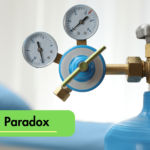Introduction:
The brain, a marvel of complexity and resilience, is vulnerable to a myriad of medical conditions that can profoundly impact cognitive function, behavior, and overall well-being. While traditional treatments have made strides in managing neurological disorders, the emergence of oxygen therapy as a therapeutic modality offers new hope for individuals grappling with brain-related ailments. In this blog, we’ll explore a diverse array of neurological conditions, from autism to traumatic brain injury, and examine how oxygen therapy holds promise in their resolution or management.
The brain, often referred to as the body’s command center, is a complex organ susceptible to various medical conditions that can significantly impact health and well-being. Among the innovative treatment modalities available, oxygen therapy stands out as a promising intervention for addressing certain brain-related ailments. In this blog, we’ll explore the fascinating realm of medical conditions in the brain that can be effectively resolved or managed through the application of oxygen therapy.
Autism Spectrum Disorder (ASD):
Autism, a neurodevelopmental disorder characterized by impaired social interaction and communication skills, has been linked to abnormalities in brain function and connectivity. While oxygen therapy is not a cure for autism, some studies suggest that hyperbaric oxygen therapy (HBOT) may improve certain symptoms by enhancing cerebral perfusion, reducing inflammation, and modulating neurotransmitter activity, thereby promoting neurobehavioral improvements in some individuals with ASD.
Alzheimer’s Disease:
Alzheimer’s disease, the most common form of dementia, is characterized by progressive cognitive decline and memory loss. Oxygen therapy, particularly HBOT, has shown potential in preclinical studies and early clinical trials for Alzheimer’s disease by enhancing brain metabolism, reducing amyloid-beta deposition, and promoting neurogenesis, offering a glimmer of hope in the quest for effective disease-modifying treatments.
Brain Herpes (Herpes Encephalitis):
Herpes encephalitis, a rare but serious viral infection of the brain caused by the herpes simplex virus, can result in significant neurological sequelae if left untreated. Oxygen therapy, alongside antiviral medications, plays a supportive role in managing brain herpes by ensuring optimal tissue oxygenation and mitigating hypoxic-ischemic injury, thereby improving outcomes and reducing the risk of long-term complications
Dementia:
Dementia, a syndrome characterized by progressive cognitive decline and functional impairment, encompasses various neurodegenerative disorders, including Alzheimer’s disease and vascular dementia. While oxygen therapy does not halt disease progression, it may alleviate symptoms and enhance cognitive function in some individuals by improving cerebral blood flow, reducing oxidative stress, and preserving neuronal integrity.
Drowning Stroke (Hypoxic-Ischemic Encephalopathy):
Drowning-related incidents can lead to hypoxic-ischemic brain injury, resulting in neurological deficits and cognitive impairment. Oxygen therapy, initiated promptly following resuscitation, plays a critical role in mitigating brain damage by restoring oxygenation levels, minimizing secondary injury cascades, and preserving neurological function, thereby improving the prognosis for survivors of drowning strokes.
Anoxic Brain Injury:
Anoxic brain injury, caused by a complete lack of oxygen supply to the brain, can occur due to cardiac arrest, respiratory failure, or suffocation. Oxygen therapy, administered promptly and aggressively, aims to restore cerebral oxygenation, prevent neuronal death, and mitigate the extent of brain damage, thereby improving outcomes and reducing the risk of long-term disability in survivors of anoxic brain injury.
Brain Aneurysm:
A brain aneurysm, a bulging or ballooning of a blood vessel in the brain, poses a significant risk of rupture and life-threatening bleeding (subarachnoid hemorrhage). Oxygen therapy is often employed as part of the acute management of brain aneurysms to optimize cerebral oxygenation, reduce intracranial pressure, and minimize the risk of ischemic injury, particularly in the perioperative period following surgical intervention or endovascular treatment.
Intracranial Abscess:
An intracranial abscess, a localized collection of pus within the brain parenchyma or surrounding tissues, requires prompt diagnosis and aggressive treatment to prevent neurological complications and systemic spread of infection. Oxygen therapy, adjunctive to surgical drainage and antimicrobial therapy, aids in combating infection, promoting tissue healing, and reducing the risk of cerebral edema and intracranial hypertension, thereby improving outcomes in patients with intracranial abscesses.
Migraine Headache:
Migraine, a neurological disorder characterized by recurrent episodes of throbbing headache, often accompanied by nausea, vomiting, and sensory disturbances, can significantly impair quality of life. While oxygen therapy is primarily utilized in the acute management of cluster headaches, some studies suggest its potential efficacy in relieving migraine symptoms by increasing cerebral oxygenation, reducing cortical spreading depression, and modulating pain pathways, although further research is warranted to elucidate its optimal role in migraine therapy.
Mild Cognitive Impairment (MCI):
Mild cognitive impairment, a transitional stage between normal aging and dementia, is characterized by subtle cognitive deficits that do not significantly impair daily functioning. Oxygen therapy, through its neuroprotective effects, may slow the progression of MCI to dementia by enhancing cerebral oxygenation, preserving synaptic integrity, and mitigating neurodegenerative processes, offering a potential avenue for early intervention and disease modification.
Multiple Sclerosis (MS):
Multiple sclerosis, an autoimmune disorder characterized by demyelination of the central nervous system, manifests with a wide spectrum of neurological symptoms, including motor dysfunction, sensory disturbances, and cognitive impairment. While oxygen therapy is not a primary treatment for MS, some individuals may experience symptomatic relief from fatigue and spasticity with hyperbaric oxygen therapy, attributed to its anti-inflammatory effects, promotion of remyelination, and enhancement of neuronal repair mechanisms.
Traumatic Brain Injury (TBI):
Traumatic brain injury, resulting from external forces causing brain dysfunction, can lead to a wide range of neurological deficits and cognitive impairments. Oxygen therapy, initiated early in the acute phase of TBI, aims to optimize cerebral oxygenation, reduce secondary injury cascades, and promote neuroregeneration, thereby improving outcomes and reducing the risk of long-term disability in survivors of traumatic brain injury.
Carbon Monoxide Poisoning:
Carbon monoxide (CO) poisoning poses a significant threat to brain health, as CO binds to hemoglobin with greater affinity than oxygen, leading to tissue hypoxia and cellular damage. Oxygen therapy, administered via non-rebreather masks or hyperbaric chambers, displaces CO from hemoglobin and promotes its elimination, thereby restoring normal oxygenation levels in the brain and preventing further neurologic injury.
Cerebral Hypoxia-Ischemia:
Cerebral hypoxia-ischemia, characterized by inadequate oxygen supply to the brain, can result from various etiologies, including cardiac arrest, respiratory failure, or circulatory shock. Oxygen therapy serves as a cornerstone in the management of cerebral hypoxia-ischemia, as timely intervention with supplemental oxygen helps maintain cerebral perfusion and prevents irreversible brain damage, particularly in critical care settings.
Stroke:
Stroke, a leading cause of disability and mortality worldwide, occurs when blood flow to a part of the brain is interrupted, resulting in tissue damage due to oxygen deprivation. Oxygen therapy, particularly hyperbaric oxygen therapy (HBOT), has emerged as a complementary approach in stroke rehabilitation. By delivering oxygen at increased atmospheric pressure, HBOT promotes neuroplasticity, reduces inflammation, and enhances tissue repair mechanisms, thereby aiding in the recovery of stroke survivors and mitigating long-term sequelae.
Traumatic Brain Injury (TBI):
Traumatic brain injury, often resulting from accidents or concussive forces, can lead to devastating neurological deficits and cognitive impairments. Oxygen therapy plays a pivotal role in the acute management of TBI by optimizing cerebral oxygenation and mitigating secondary brain injury mechanisms, such as ischemia and edema. Additionally, HBOT has shown promise in improving outcomes and reducing neurologic deficits in patients with chronic TBI by facilitating neuronal regeneration and modulating neuroinflammatory responses.
Conclusion:
Oxygen therapy represents a compelling therapeutic strategy in the realm of brain health, offering hope and healing to individuals grappling with neurological disorders and injuries. Whether in the acute setting of stroke or traumatic brain injury or the chronic sequelae of carbon monoxide poisoning, oxygen therapy exerts its beneficial effects by optimizing cerebral oxygenation, promoting tissue repair, and attenuating neuroinflammatory responses. As research continues to elucidate the intricate mechanisms underlying oxygen therapy’s neuroprotective properties, its integration into clinical practice holds promise for improving outcomes and enhancing quality of life for patients with diverse brain-related conditions.
Neurological conditions affecting the brain present formidable challenges to both patients and healthcare providers, often necessitating multifaceted treatment approaches to address their complex pathophysiology and diverse manifestations. In this regard, oxygen therapy emerges as a versatile and promising intervention, offering neuroprotective benefits across a spectrum of brain-related ailments, from neurodevelopmental disorders like autism to neurodegenerative diseases like Alzheimer’s and traumatic injuries such as TBI. While further research is needed to delineate the optimal protocols and mechanisms underlying oxygen therapy’s therapeutic effects in specific neurological conditions, its integration into clinical practice holds promise for improving outcomes, enhancing quality of life, and unlocking new avenues for neurorehabilitation and disease modification.







